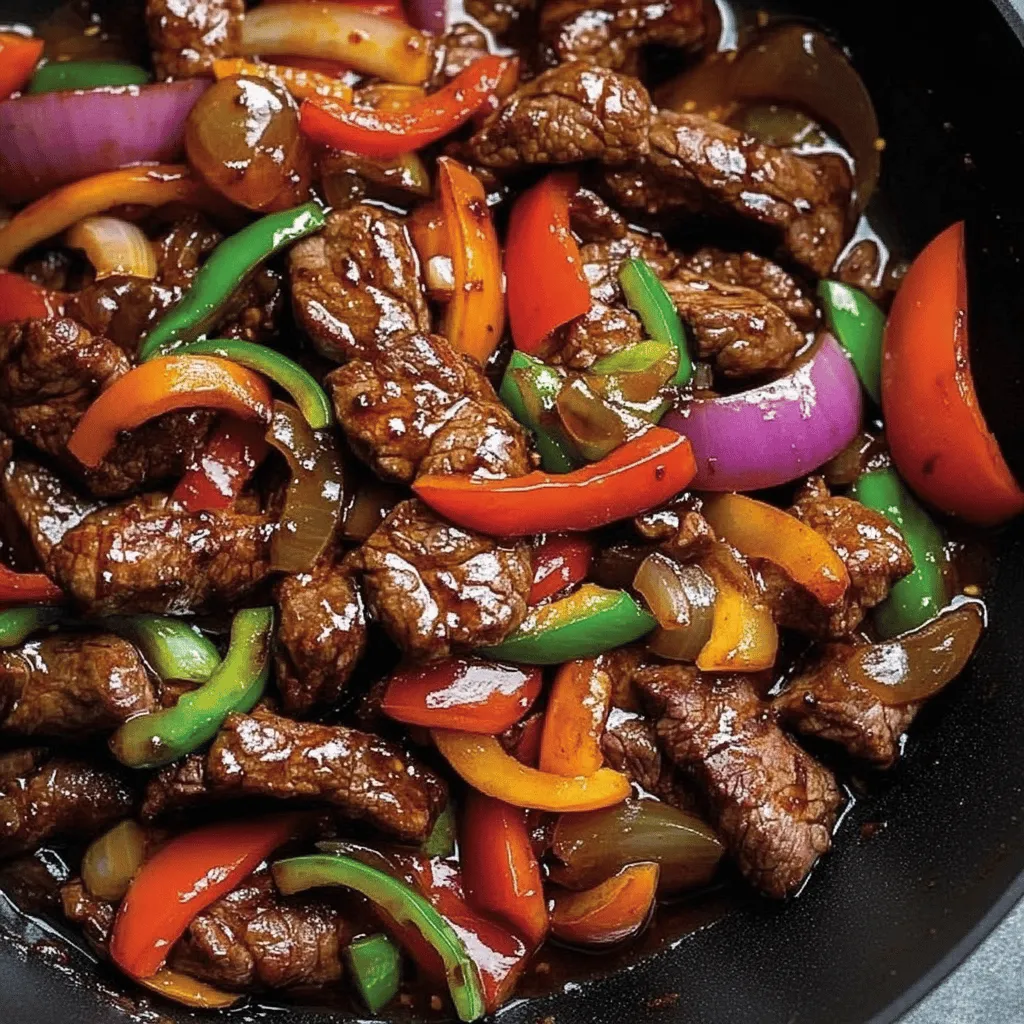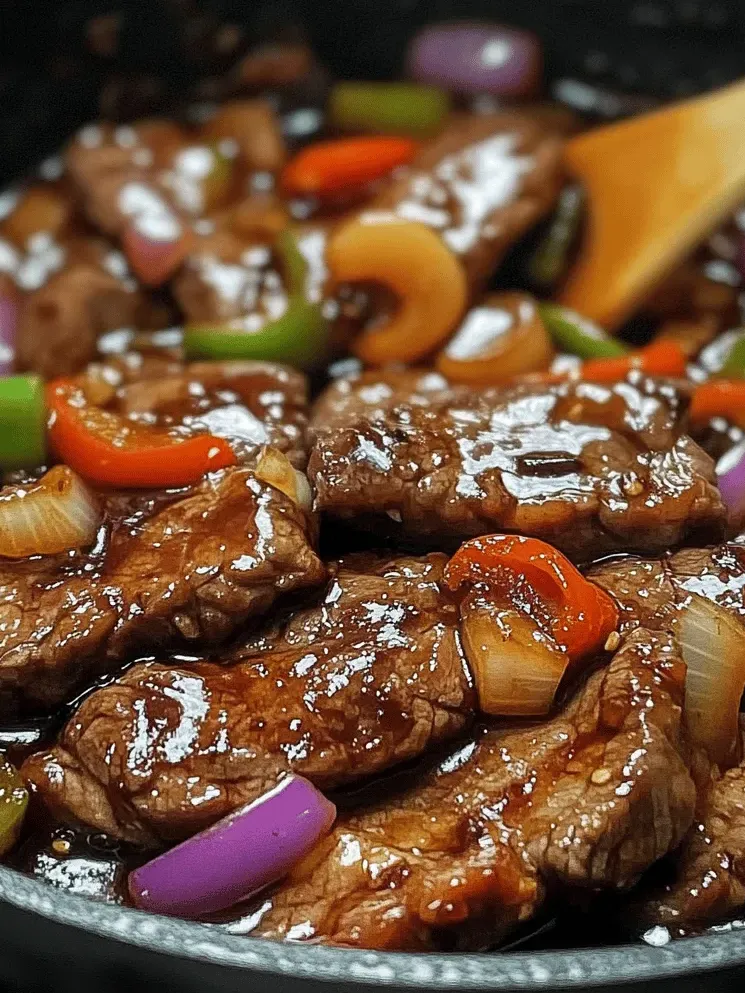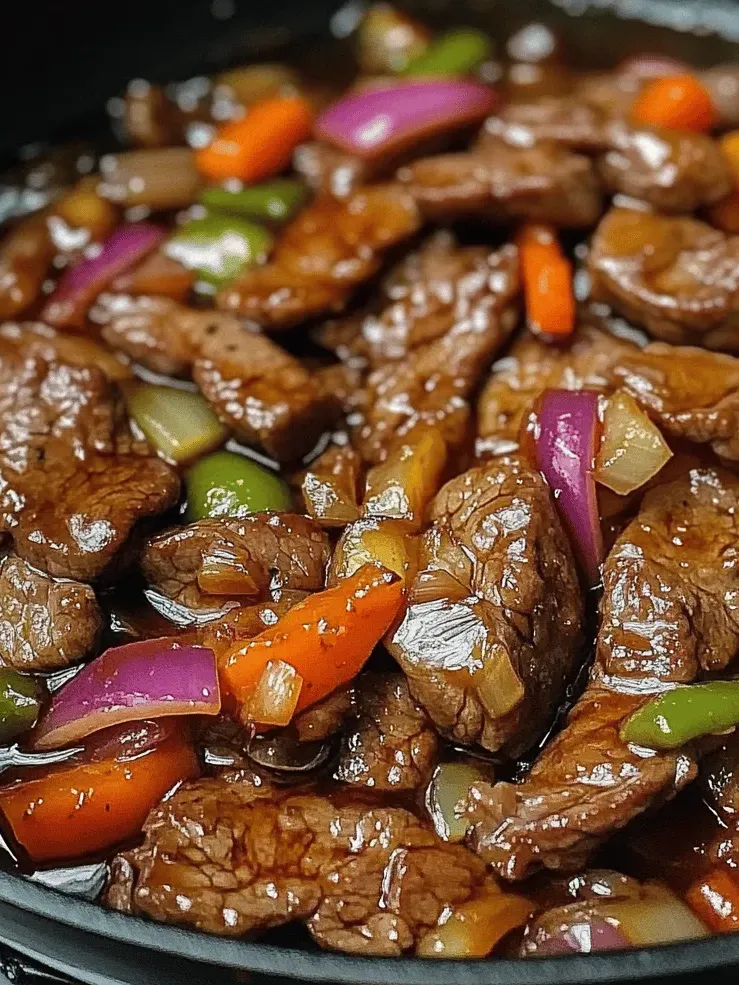 Save
Save
This homemade Chinese pepper steak turns basic ingredients into a fancy-looking dinner right in your own home. The tasty mix of soft beef strips with bright bell peppers makes a dish that's both filling and impressive, perfect for busy evenings when you want something awesome without spending hours cooking.
I started making this pepper steak while trying to copy my grandpa's favorite Chinese takeout. After trying a few times, this version got his thumbs up, and now the family asks for it at almost every get-together.
Ingredients
- Beef top sirloin steak: Gives just the right mix of tenderness and taste. Go for cuts with good marbling for the most juicy results.
- Soy sauce: Makes the savory foundation for the marinade. Pick low-sodium if you want to manage the salt.
- White sugar: Cuts the saltiness and helps get that nice browning on the meat.
- Cornstarch: Makes the beef tender while creating a smooth coating that locks in moisture.
- Ground ginger: Brings a cozy warmth and real Chinese flavor without being too strong.
- Vegetable oil: Its bland taste lets other flavors stand out. Pick one that can handle high heat.
- Red onion: Brings a bit more sweetness than yellow onions and adds nice color contrast.
- Green bell pepper: Adds crispness and freshness against the rich meat. Look for firm ones with shiny skin.
- Tomatoes: Give brightness and slight tartness that works well with the savory parts. Roma types keep their shape during cooking.
Step-by-Step Instructions
- Cut the Beef Correctly:
- Slice your sirloin opposite the grain into skinny strips about half an inch thick. This key step makes sure it's tender by cutting through the muscle fibers. Don't rush this part since how you cut affects the final feel in your mouth.
- Mix Up the Marinade:
- Stir together soy sauce, sugar, cornstarch, and ginger until it's totally smooth with no dry spots. The cornstarch doesn't just thicken but also softens the beef through a method called velveting, giving it that real Chinese restaurant softness.
- Soak the Beef:
- Cover each beef strip with the marinade, using your fingers if needed to make sure every bit gets coated. Let the beef sit in this mix for at least 10 minutes while getting the veggies ready, though 20 minutes works even better for flavor.
- Brown the Beef:
- Get your wok hot until you see the first wisps of smoke before putting in oil. Cook the beef in little batches to avoid packing the pan, which would steam instead of brown the meat. Go for a nice dark outside while keeping the inside juicy, about 3 minutes per group. Take it out and set aside.
- Handle the Veggies:
- Use the same wok to keep all those tasty bits from the beef. Put in the onions first, cooking until they start to soften but still have some snap. The bell peppers go in after, cooking just until their color gets brighter while staying crunchy.
- Put It All Together:
- Bring the beef back to the wok with all the juices that came out. Add the tomato chunks last since they need very little cooking so they don't fall apart. Mix everything gently but well to blend the flavors while keeping the veggies crisp and colorful.

This dish is really special to me because it was the first Chinese meal I totally figured out by myself. That moment when I realized I could make these authentic flavors without following directions was really game-changing for my cooking confidence. The mix of tender beef with slightly crunchy veggies creates a texture experience that makes everyone want seconds.
Getting That Perfect Meat Softness
The velveting trick used here is an old Chinese cooking method that makes incredibly soft meat. The cornstarch in the marinade puts a protective layer on the beef that stops it from getting tough during high-heat cooking. For an even more authentic taste, you can throw in a spoonful of rice wine to the marinade. Let the beef soak for up to 30 minutes if you've got time, though even just 10 minutes makes a big difference in how the final dish feels.

Making This Pepper Steak Your Own
While the classic version calls for green bell peppers, feel free to play around with different colors. Red and yellow bell peppers bring more sweetness and look pretty, while adding a bit of thinly cut hot pepper can give a nice kick. Some folks like adding water chestnuts for extra crunch or baby corn for different texture. This dish is so flexible it's great for using whatever veggies you happen to have around.
What To Serve With It
While plain white rice is the typical side for pepper steak, try it with brown rice for more nutrients or cauliflower rice if you want fewer carbs. For a full Chinese-style meal, serve it with veggie spring rolls or a simple cucumber salad dressed with rice vinegar and sesame oil. A few toasted sesame seeds or chopped green onions on top makes it look fancy and adds extra flavor.
Keeping and Warming Up
This pepper steak warms up really well, making it perfect for planning meals ahead. Keep any leftovers in a sealed container in the fridge for up to three days. When heating it up again, add a spoonful of water to bring back moisture, and warm it gently in a pan instead of the microwave to keep the veggies from getting mushy. The flavors often get better overnight, so day-two pepper steak can sometimes taste even better than when you first made it.
Frequently Asked Cooking Questions
- → What cut of beef works best for this dish?
The best choice is top sirloin that's cut into thin strips since it cooks up tender and fast. You can also try flank steak or skirt steak if that's what you have.
- → Can I use other vegetables instead of the ones listed?
You can totally swap in whatever veggies you like. Try adding some sliced mushrooms, chunky zucchini pieces, or crunchy snap peas for variety.
- → How can I make this dish spicier?
Want more kick? Toss in some red pepper flakes, fresh sliced chilies, or a squirt of Sriracha sauce while you're cooking to ramp up the heat.
- → Can I prepare this dish ahead of time?
You can get a head start by cutting your meat and chopping all your veggies earlier in the day. Let the beef soak in the marinade for a few hours before cooking to save time later.
- → What type of oil is best for stir-frying?
Go for oils that won't smoke when they get really hot. Canola oil, peanut oil, or plain vegetable oil all work great for stir-frying.
